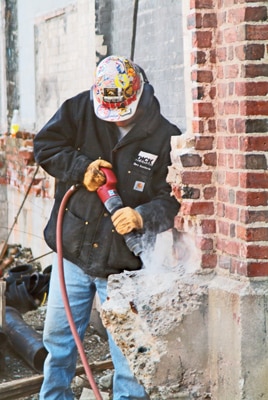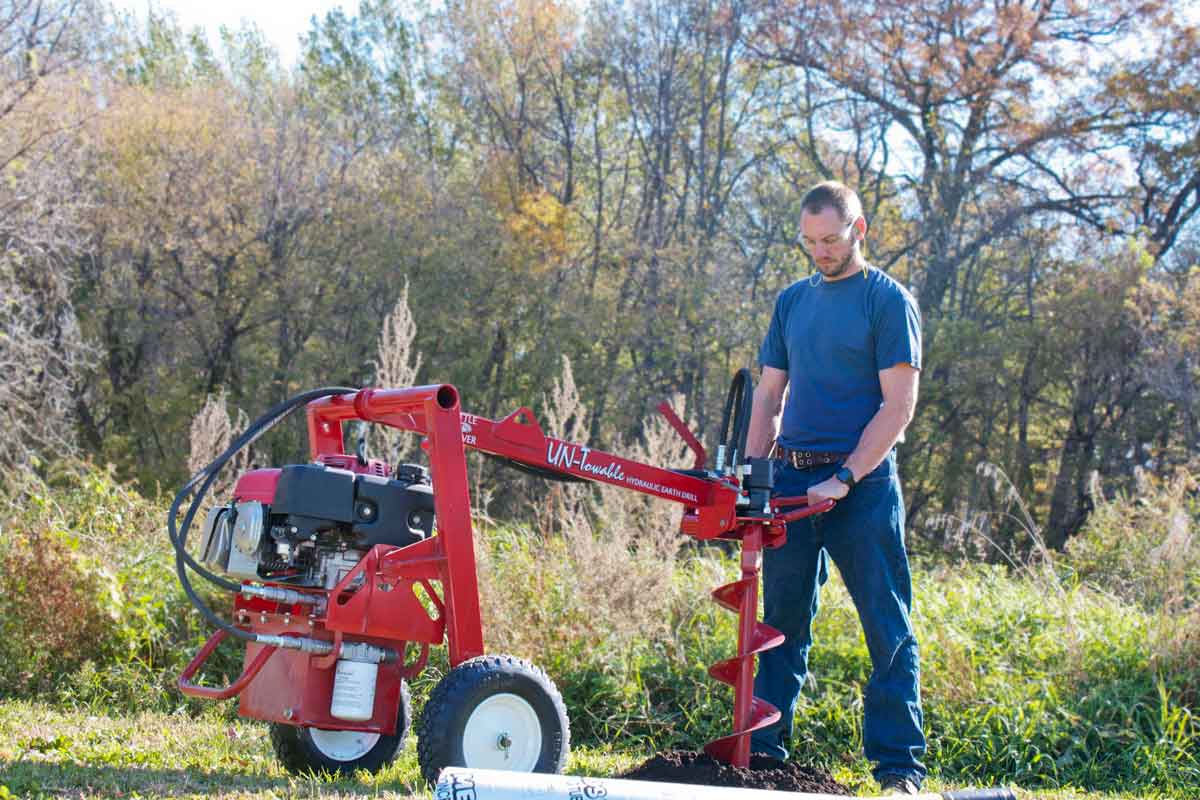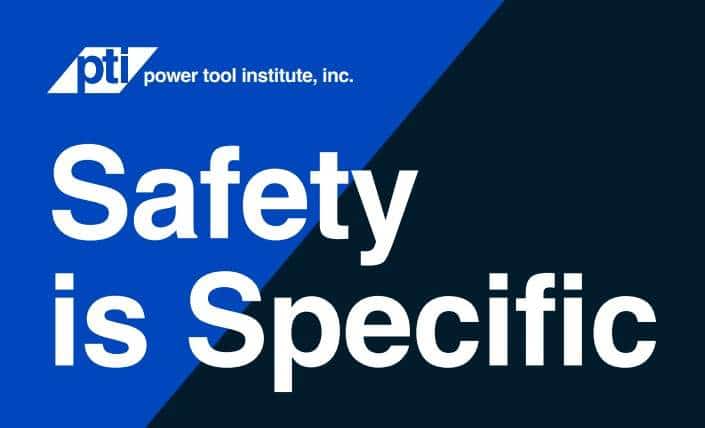Break Right: A Guide to Get the Best Performance from Chipping Hammers
Chipping hammers are small but very effective if used on the right applications. This inexpensive tool gives operators a bang for their buck, but it is important to know the right applications and maintenance to perform in order to get the most for that money.
Applications
The general application for chipping hammers is strictly light demolition, such as chipping out an old brick wall or mortar. Operators should never use a chipping hammer on any concrete too thick or in big jobs like parking garage surface demolition. This results in a short lifespan of the tool. Rather, rivet busters are a great alternative for bigger jobs.
Variety of Chipping Hammers
First off, there are a small variety of chipping hammers on the market. This includes the style of hammer, cylinder length and design. For style, there is a four bolt, which holds the hammer together by the bolts, or a screw-on chipping hammer, on which the handle screws onto the barrel. The standard cylinder lengths range from 3 or 4 in. While not as typical, some manufacturers also feature a 2-in. cylinder configuration.
While the principle of chipping hammers is the same, the design of the hammers can be different. Some manufacturers feature more variations than others. Typically, the most prominent design change from one to the other is different handles, based on user preference. There is the D-handle or an open handle that looks more like a gooseneck or pistol grip and can offer the user a little more flexibility. In addition, there is either an outside or inside trigger, again based on user preference. Lastly, chipping hammers have multiple retainers, but that does not retract from their hitting power as they all offer about the same power and blows per minute. It is really a matter of different features that match up to the user’s application or whatever they prefer to use.
Matching Hammer to Compressor
Chipping hammers require minimal air pressure at 90 psi, which makes it easy to run a gang of hammers off a 185-cfm compressor. Cfm ranges from the smallest hammer taking 20 cfm up to the biggest hammer at 35 cfm. Hammers do not typically go over 35 cfm. The minimal air requirement also allows for multiple hammers to be utilized on a jobsite at the same time off of one compressor.
Maintenance and Different Retainers

The most crucial thing, and this goes for any air tool, is to avoid dry firings.
Speaking of maintenance, while throwing away older chipping hammers is a trend, not everyone does so. For rental houses and operators who use this tool often, there are some maintenance items to focus on and take care of to expand the life of the tool. For daily use, always check the tightness of the tool. If it is the four-bolt tool, always make sure the handle is tight and that it still has all four bolts and nuts. For screw-on chipping hammers, check to see that the handle is screwed on all the way and is not backing off.
If you have a spring retainer, check the integrity of the spring. If it is bent or has lost its integrity and starts to be more oval, change it. For spring retainers in chipping hammers — and this goes for rivet busters too — pull the spring out, remove the retainer, put the steel shank into the cylinder, then the retainer goes over the steel and the spring is inserted to hold the retainer on. Be sure to use an oval collar for spring retainers.
There are different types of retainers throughout the industry, which can be confusing. Quick-change retainers are one style that is becoming much more common. For those, simply pull back the sleeve and insert the steel. Make sure to use round collar steel. While spring retainers are the standard, operators are moving away from those because the spring is a wear item. With a quick-change retainer, operators do not have to worry about the spring, which makes it much easier to change out the tools.
In addition to changing the retainers, always run an oiler. Chipping hammers do not have any onboard oilers, so run an inline oiler to constantly lubricate the tool. The oiler should be placed about 6 to 10 ft in line from the tool. On a monthly basis, take apart the tool, clean it out, lubricate it and put it back together. This, along with the daily checks, will ensure a longer lifespan of the tool.
Things to Avoid
The most crucial thing, and this goes for any air tool, is to avoid dry firings. This will wear down the components and it will rapidly exhaust the hammers that feature spring-on retainers. As mentioned earlier, chipping hammers should not be used on larger applications, but we see this happen often. Operators use the smaller tool because it is lighter and easier on the operator. But, by doing so, they are wearing out the chipping hammer, breaking the retainer and damaging the springs.
Other things we see on the jobsite are operators putting in 18-in. chisels and prying with them. This places a lot of stress on the retainer and chuck of the tool, ultimately breaking the hammer. Chipping hammers may be small, but by performing proactive maintenance and utilizing them in the right applications, they will quickly maximize your return on investment.



Comments are closed here.